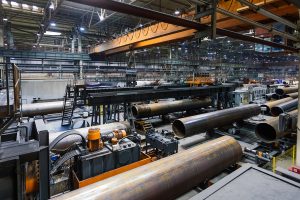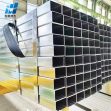What are the advantages of the Central bank’s “RRR cut” in the steel market?
The steel market plays a crucial role in the global economy, serving as a foundation for various industries such as construction, manufacturing of ERW pipe, and infrastructure development. The central bank’s decision to implement a “RRR cut” (reserve requirement ratio cut) in the steel market can have several advantages that positively impact the industry and the overall economy.
Firstly, a reduction in the reserve requirement ratio allows commercial banks to have more liquidity available for lending. When the central bank lowers the RRR, it means that banks are required to hold a lower percentage of their deposits as reserves. This enables them to have a larger pool of funds to lend to businesses, including steel manufacturers. Increased lending capacity can lead to more investment in the steel industry, facilitating expansion, modernization, and technological advancements. Consequently, this stimulates production of Cold rolled Square Steel Tube, enhances competitiveness, and supports economic growth.

Secondly, the RRR cut can help lower borrowing costs for steel enterprises. With more liquidity in the banking system, competition among lenders intensifies, thereby driving interest rates down. Reduced borrowing costs enable steel companies to access affordable financing for their operations, capital expenditure, and research and development initiatives. This, in turn, encourages investment, innovation, and productivity improvements within the industry. Lower borrowing costs also make steel products more affordable for consumers, promoting consumption and further stimulating demand.
Furthermore, the RRR cut can have a positive impact on employment within the steel market. As steel companies expand their operations and invest in new projects, job opportunities are created. This is particularly significant as the steel industry is a labor-intensive sector, requiring a skilled workforce for various operations such as manufacturing, logistics, and maintenance. Increased employment not only contributes to reducing unemployment rates but also improves living standards and boosts overall economic activity of hot rolled steel pipe through increased consumer spending.
Additionally, the RRR cut can help stabilize steel prices. By increasing the availability of credit and lowering borrowing costs, the central bank’s intervention can mitigate price volatility and prevent sharp fluctuations in the steel market. Stable prices provide certainty for both steel producers and consumers, facilitating long-term planning, investment decisions, and business sustainability.
In conclusion, the central bank’s “RRR cut” in the steel market brings several advantages that positively impact the industry and the broader economy. It enhances lending capacity, reduces borrowing costs, boosts investment and innovation, generates employment opportunities, and stabilizes steel prices. These benefits foster a healthy and prosperous steel market of
Hot Rolled Square Steel Tube, which, in turn, contributes to economic growth, industrial development, and the overall well-being of society. The central bank’s proactive measures in managing the reserve requirement ratio demonstrate its commitment to supporting key sectors and fostering sustainable economic progress.
Tel: +86 18202256900 Email: steel@fwssteel.com










